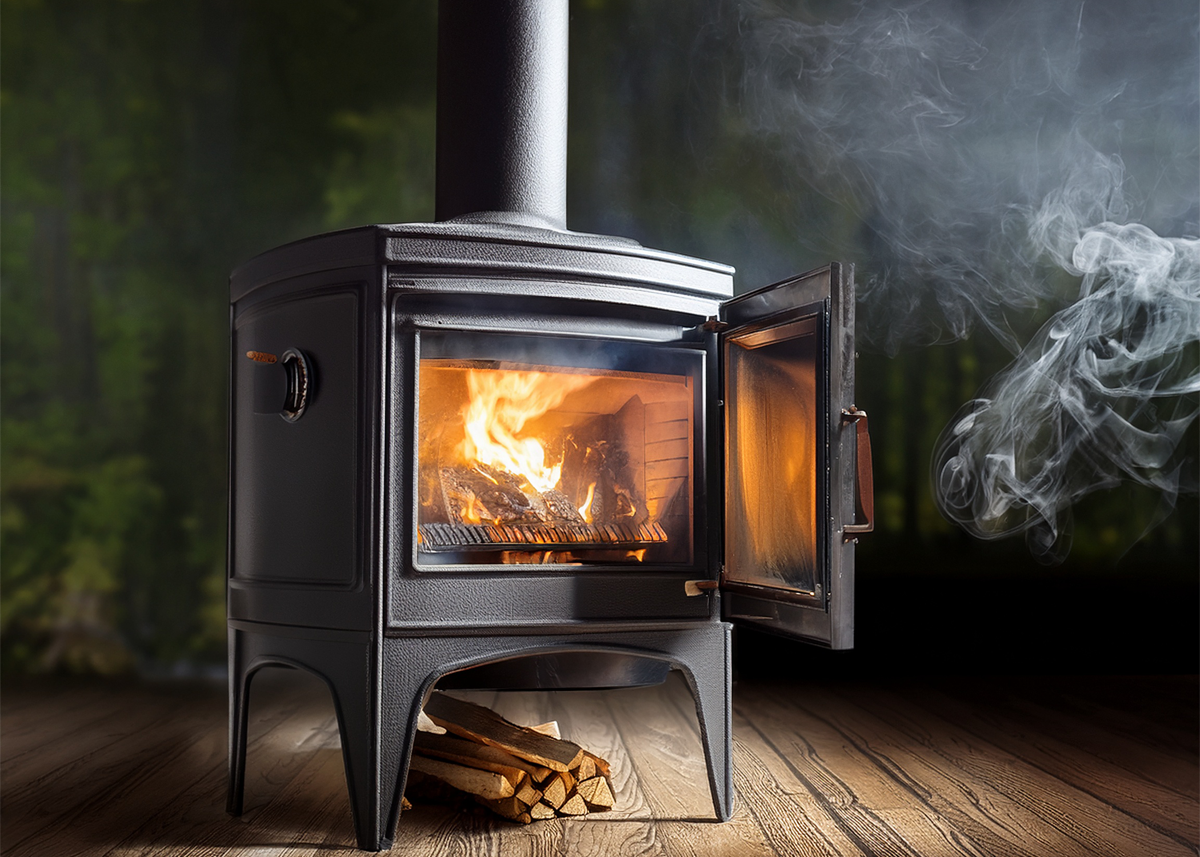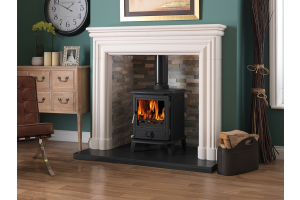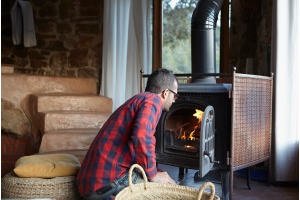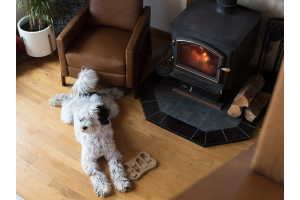Why Is Smoke Coming Back Down My Chimney? Common Causes & How To Fix It

Nothing spoils a cosy evening in front of the fire like smoke billowing back into your room. If you’ve noticed smoke coming back down your chimney, it’s a clear sign something’s not working as it should. But don’t worry — in most cases, the problem can be identified and fixed fairly easily.
In this guide, we’ll explain the most common causes of chimney smoke issues, how to troubleshoot them, and what solutions are available to get your fireplace or stove working safely and efficiently again.
Why Is Smoke Coming Back Down My Chimney?
There are several reasons why smoke might not be escaping up your flue properly. Here are the most common culprits:
1. Cold or Blocked Chimney
Problem:
If your chimney is cold, it can prevent the smoke from rising properly. Cold air in the flue acts like a plug, forcing the smoke to come back into the room. A blocked chimney — caused by bird nests, debris, soot build-up, or even a fallen brick — can also stop smoke escaping.
Fix:
- Warm the flue before lighting your fire by burning a rolled-up newspaper or firelighter.
- Check for visible blockages.
- Get your chimney professionally swept — ideally once a year, or more often if in regular use.
2. Downdraught
Problem:
Downdraught occurs when wind blows down the chimney, forcing smoke back into your home. This is often caused by the shape of your roofline, nearby tall trees, or atmospheric pressure changes.
Fix:
- Fit an anti-downdraught chimney cowl to prevent wind from blowing directly down the flue.
- Avoid lighting fires on particularly windy days without a proper cowl fitted.
3. Poor Ventilation in the Room
Problem:
Fires need a constant flow of fresh air to burn properly. If your room is too airtight — especially in modern, well-insulated homes — the fire will struggle for oxygen, causing smoke to drift back inside.
Fix:
- Open a window slightly when the fire is lit.
- Install an air vent in the room to supply a consistent source of fresh air.
4. Incorrect Flue Size or Liner Issues
Problem:
If your chimney flue is too narrow or too wide for your stove or fireplace, it can disrupt the natural draft. An unlined or poorly lined chimney can also cause smoke problems and reduce efficiency.
Fix:
- Make sure your flue liner matches the size of your appliance outlet.
- Consider installing a flexible flue liner to improve draft and heat retention.
- Speak to a professional installer if you’re unsure about your flue’s suitability.
5. Poor Fire Lighting Technique
Problem:
Lighting a fire incorrectly — using too much unseasoned wood or piling fuel on too quickly — can produce excessive smoke that struggles to rise up the chimney.
Fix:
- Always use kiln-dried or well-seasoned wood with a moisture content under 20%.
- Light your fire using the top-down method: place the larger logs at the bottom, kindling on top, and light from the top for a cleaner, more efficient burn.
6. Soot Build-Up and Creosote Deposits
Problem:
A chimney lined with soot or creosote restricts airflow, reduces draft, and increases the risk of chimney fires.
Fix:
- Have your chimney swept regularly — at least once a year for wood-burning appliances.
- Consider using a flexible flue liner with insulation to improve performance and reduce soot build-up.
Final Thoughts
If you’re experiencing smoke problems with your chimney, it’s important not to ignore them. Not only is it unpleasant, but it can also pose serious health risks from carbon monoxide and increase the chance of chimney fires.
The good news is that with the right chimney cowl, a suitable flue liner, and good fire-lighting habits, most smoke issues can be resolved quickly and safely.
Need Expert Advice?
At National Chimney Supplies, we stock a full range of chimney cowls, flexible flue liners, and installation accessories to help keep your chimney system working perfectly. Not sure what you need? Call our team on 01143 583399 during usual office hours, we’re happy to help.









